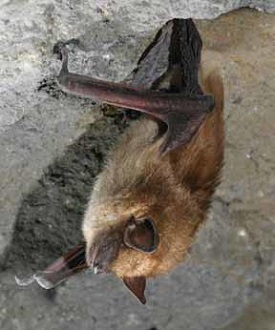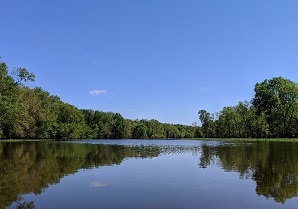Wildlife, Fish & Marine Life Newsletter
The New York State Department of Environmental Conservation sent this bulletin on 10/26/2020 01:04 PM EDT |
| DEC Delivers - Information to keep you connected and informed from the NYS Department of Environmental Conservation |
| Share or view as a web page || Update preferences or unsubscribe |
Wildlife, Fish, and Marine Life Newsletter |
Motorists Should Watch For Deer and Moose on or Near Roadways
Motorists should be aware that animals are especially active at dawn and dusk when visibility may be reduced and commuter traffic may be heavy. DEC recommends these precautions motorists can take to reduce the chance of hitting a deer or moose:
Photo by Bill Richardson. Help Protect New York's Bat Populations During Bat Week
Unfortunately, many species of bats, including little brown bats, have faced severe population declines due to White-nose Syndrome. The disease has killed more than 90 percent of bats at hibernation sites in New York. You can help protect New York's bat populations by avoiding caves and mines, which may be home to hibernating bats, from October through April. Human disturbances are very harmful to bats. White-nose syndrome makes bats very sensitive to disturbances. Even a single, seemingly quiet visit can kill bats that would otherwise survive the winter. If you see hibernating bats, assume you are doing harm and leave immediately. Anyone entering a northern long-eared bat hibernation site from October 1 through April 30, the typical period of hibernation for bats, may be subject to prosecution. Some bat facts:
Learn more about bats in Bats of New York State (PDF). Photo by Al Hicks. DEC to Discuss Managing Wildlife on Northern Montezuma Wildlife Management Area
The event will feature a 60-minute presentation that discusses the WMA’s history, habitat goals, and planned management actions, followed by a question and answer period. This presentation will also be recorded and made available to the public afterward. Sign up for the online presentation by visiting the Northern Montezuma WMA webpage. You can find a link to the online registration at the top of the page. Type your questions into the chat box during the presentation, or send questions via email. Please contact Michael Palermo at (585) 226-5383 with any specific requests for accommodations. View what activities you can do at this property by clicking on the link above. State Lands to Visit: Tonawanda Wildlife Management Area
With its extensive system of marshes, the WMA is an important migratory stopover for waterfowl and other wetland-dependent birds in the Atlantic Flyway. Several at-risk species use the various habitats in the complex. The area has been designated an Important Bird Area by Audubon and is also a designated NYS Bird Conservation Area. Waterfowl hunting is a popular activity in this WMA, and waterfowl hunters are always encouraged to scout ahead of time because conditions in marshes change from year to year. Permits are required to hunt waterfowl the first weekend of duck season. Call DEC at (585) 948-5182 or visit the DEC website for more information on hunting at Tonawanda WMA. There are several features designed to promote accessibility, including multiple parking areas, viewing areas, overlooks, trails, and kiosks. Tonawanda WMA has a lot to offer outdoor enthusiasts and is a popular destination for hunting, trapping, and wildlife observation. Read more about Tonawanda WMA in the August 2020 issue of the Conservationist (PDF). Photo of an accessible waterfowl hunting blind, which is available for hunting by permit for seniors and people with disabilities. Respectfully Share the Woods Tutorial on Facebook LiveIn case you missed it, DEC’s hunter education staff recently hosted a Facebook Live session to discuss ways to recreate locally, safely, and how to respectfully share the woods with all users! See their great tips on what to wear and bring on your outings, such as food, water, a headlamp, hunter orange or other bright-colored clothing, and a map and compass. Head to DEC’s Facebook page to see the video. |

 DEC is reminding drivers that
DEC is reminding drivers that  Bat Week is an internationally recognized weeklong focus to raise awareness about the important role bats play in our environment and is a great time to appreciate New York’s nine bat species.
Bat Week is an internationally recognized weeklong focus to raise awareness about the important role bats play in our environment and is a great time to appreciate New York’s nine bat species.  DEC will host a virtual public presentation to share details about a recently completed habitat management plan for Northern Montezuma Wildlife Management Area (WMA).
DEC will host a virtual public presentation to share details about a recently completed habitat management plan for Northern Montezuma Wildlife Management Area (WMA). Tonawanda Wildlife Management Area (WMA) is located midway between Buffalo and Rochester.
Tonawanda Wildlife Management Area (WMA) is located midway between Buffalo and Rochester.